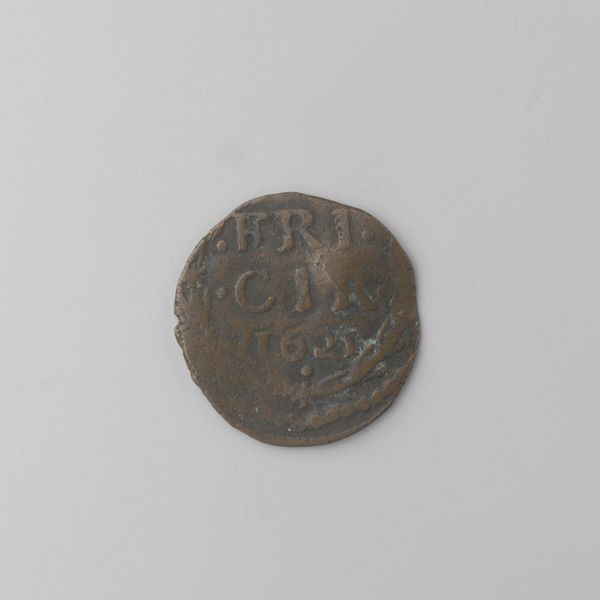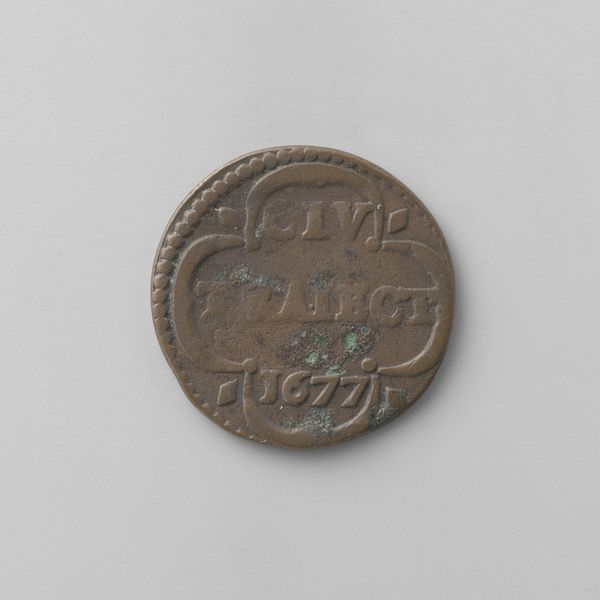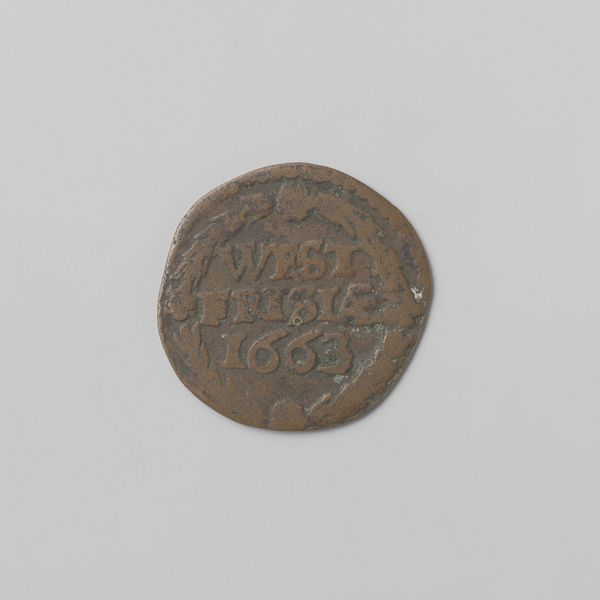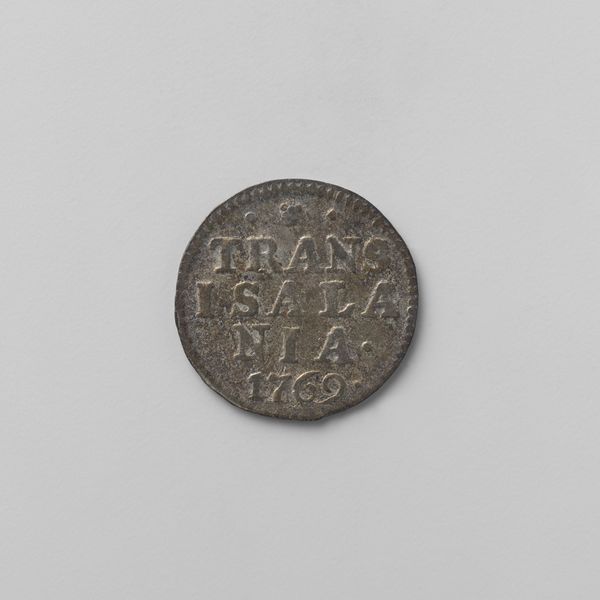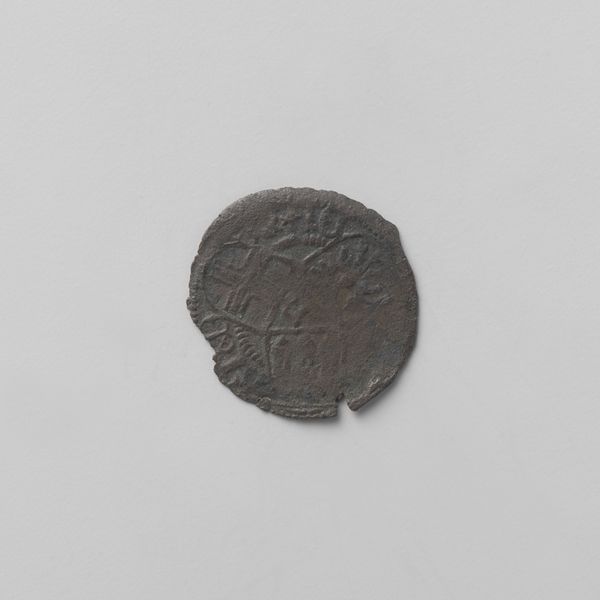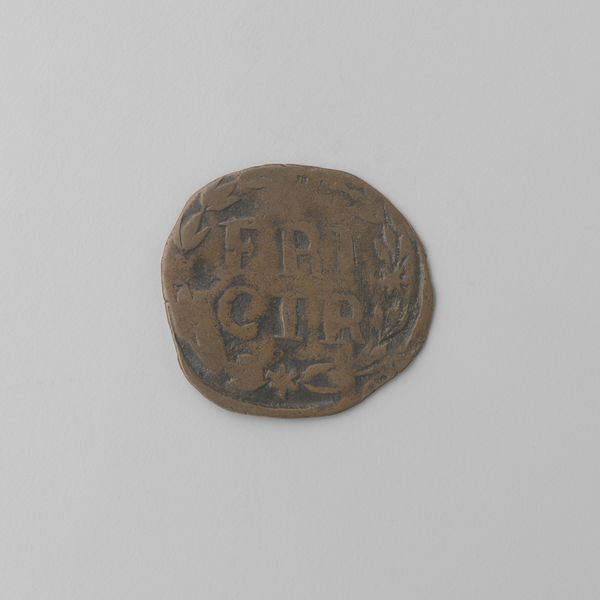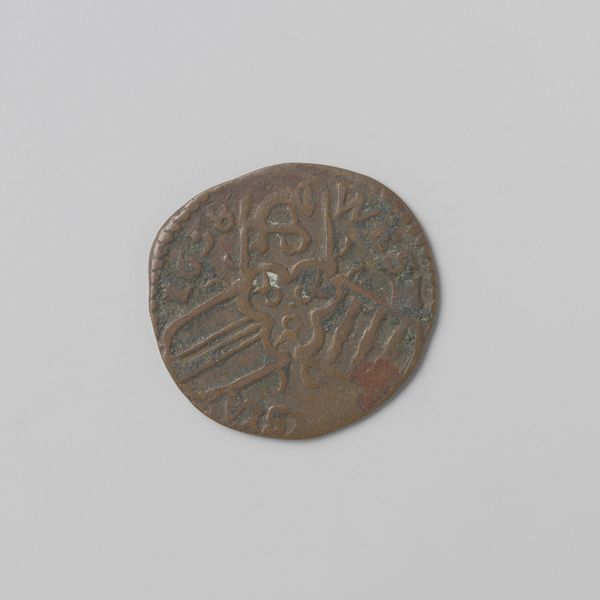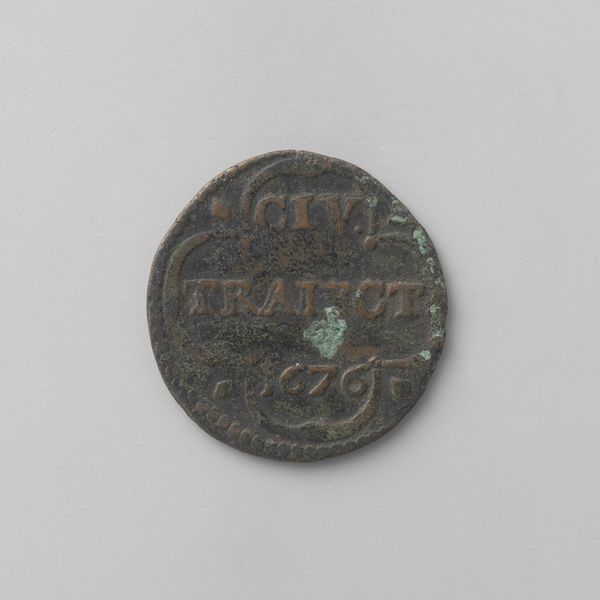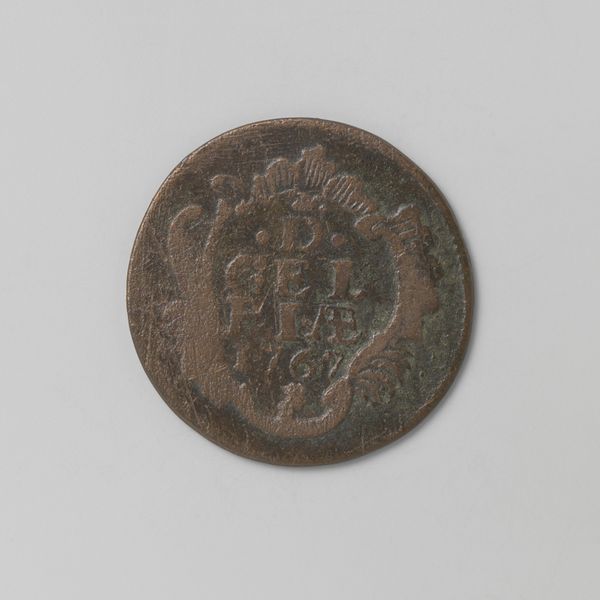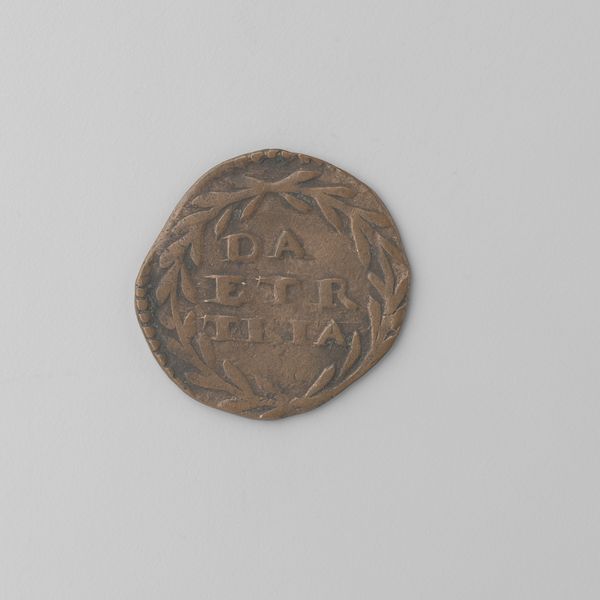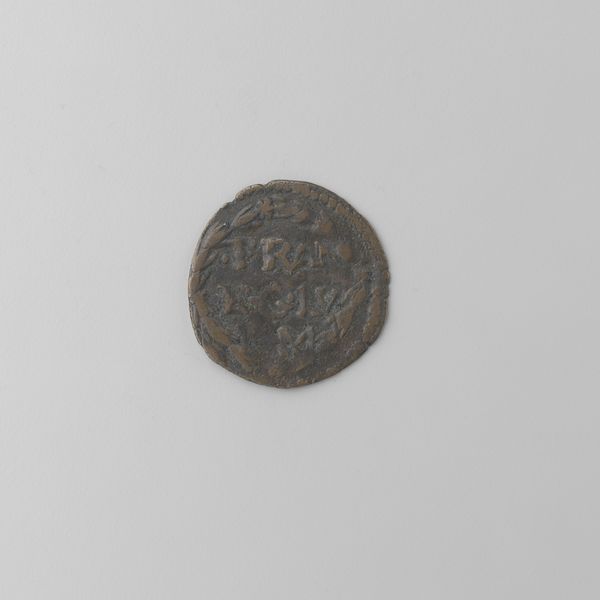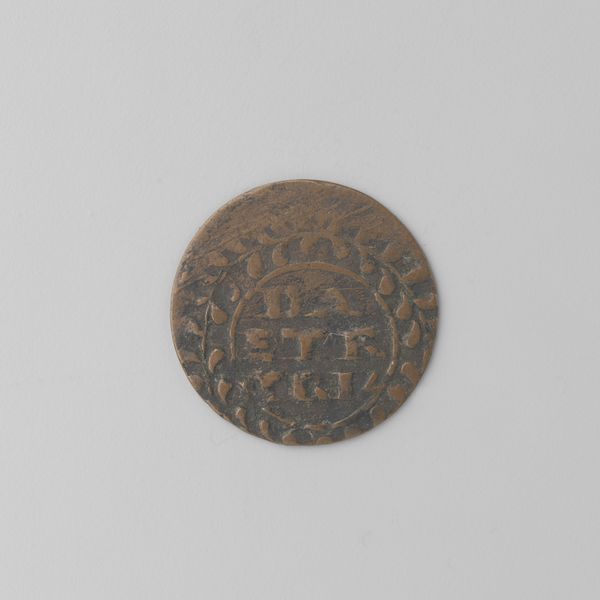
print, metal, bronze, engraving
#
baroque
#
dutch-golden-age
# print
#
metal
#
bronze
#
coin
#
engraving
Dimensions: diameter 2.1 cm, weight 1.68 gr
Copyright: Rijks Museum: Open Domain
This is a Duit, or coin, made by the city of Utrecht in 1637. Made of copper, this coin was likely produced through a process of die-striking. The designs were engraved into hardened steel dies, which were then used to impress the image onto the copper blanks. The very materiality of this coin speaks to the economic and social context of its creation. Copper, while not as precious as gold or silver, still held value, and its transformation into currency signifies the formalization of trade and economic systems. The coin's small size and weight suggest its use in everyday transactions, connecting it to the lives of ordinary people in Utrecht. The act of minting coins was a carefully guarded privilege, often associated with the ruler, or in this case, the city of Utrecht, reflecting the power and authority vested in those who controlled the flow of money. By examining this coin, we gain insight into the intertwined histories of craft, labor, and economic exchange. It challenges us to consider how even the smallest objects can carry significant cultural and historical weight.
Comments
No comments
Be the first to comment and join the conversation on the ultimate creative platform.
